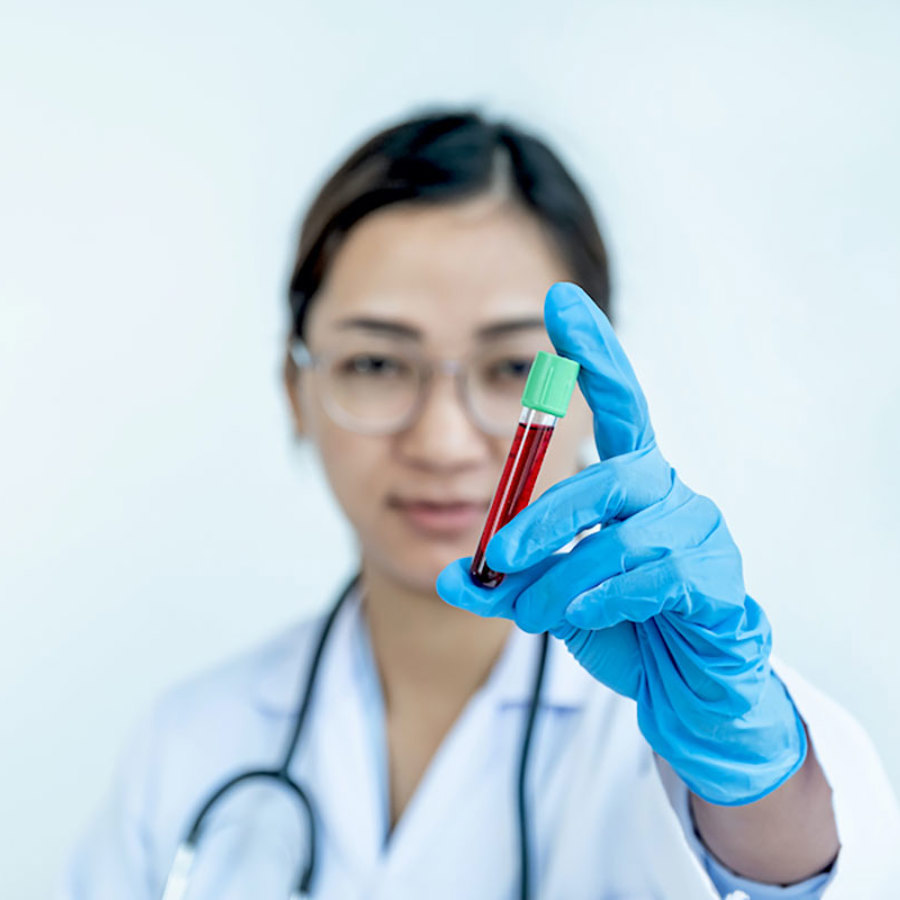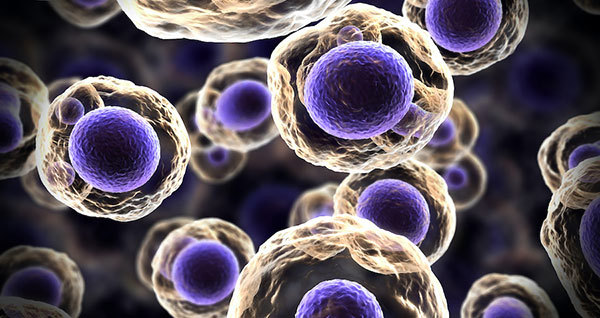
Can a single blood sample determine if you have cancer?
February 17, 2005

- Related Topics:
- Cancer,
- Genetic testing,
- Medical genetics
A curious adult from California asks:
“Can a single blood sample determine if you have cancer?”
As I thought about this more, it became a harder and harder question to answer.
The quick answer is, well, it depends. If you are looking at DNA, then a blood sample can probably only tell you if you have a blood cancer or increased risk of getting various cancers. If you are looking at markers (see below), then it might be able to tell you whether you have certain other cancers.
Cancers of the blood
By looking at the DNA from a blood sample, we can probably only tell if someone has a blood cancer like leukemia. Why is this? How can we even tell this from looking at DNA?
While most of the DNA in our cells is nearly identical, this isn’t true for the DNA in a cancer cell. One of the reasons cancers happen is that something goes very wrong with their DNA.
Sometimes these DNA changes lead the cells to either grow uncontrollably or not die at the right time. A lot of the time, the DNA changes are huge.
Things like translocations, where big chunks of whole chromosomes move and attach themselves to other chromosomes. Or millions of bases of DNA go missing. Or large tracts of DNA get duplicated.
As you can imagine, big DNA changes like these can cause all sorts of things to go wrong. If these changes happen in a blood cell, then they can lead to leukemia.
Doctors can sometimes find these sorts of changes by looking at the DNA through a microscope. They look for extra chromosomes or different sized chromosomes. To find anything, though, the changes have to be pretty obvious.

Leukemia is still usually detected by looking at the cells of a blood sample rather than its DNA. For example, a doctor may look at the number of blood cells, the proportion of each type of blood cell, blood chemistry, the shape of the cells, how well the blood clots, etc.
That seems like a lot of tests to tell if you have leukemia. But the tests tell the doctor more than that.
These tests help identify which type of leukemia a patient might have. And different types of leukemia need different medicines.
As you can probably tell, though, this is a long, expensive, and time-consuming process. What doctors need is an easier, cheaper, and more reliable test. Is there any way the DNA changes we talked about could be used?
DNA tests for cancer?
What we need is something that lets us look easily at smaller bits of DNA. A promising new technique called array CGH may be just what the doctor ordered.
CGH (comparative genomic hybridization) arrays can find more subtle DNA changes that someone using a microscope might miss. It does this by looking at DNA at the gene level.
Array CGH is also less of an art and more of a science than the older methods. What I mean is that the older methods are pretty tricky and you have to be very experienced to figure out the more subtle DNA changes. Array CGH is much more mass production, off the shelf technology. Hopefully this will mean more consistent and more accurate results. And maybe it’ll be cheaper too.
So far the results are promising. And if this technique works like scientists think it might, array CGH may also be able to identify new classes of cancers. The hope is that new classes of cancer will mean better medicines.
Remember, different classes of cancer respond to medicines differently. If we can find new classes that we were missing before, maybe they’ll respond better to different medicines too.
And this won’t be limited to blood cells. Doctors will be able to use biopsies from any cancer. And ... but back to your question. What else might we learn from a blood sample?

Cancer risk
Since most of the DNA in our cells is identical, doctors can look at the DNA in our blood to tell if we have an increased risk for lots of different cancers. You can’t do this with a microscope, though.
Doctors need to look for small changes in a patient’s DNA. So small that they need to get down to the single base level – all those A, C, G, and T’s you may have heard about.
For example, if someone has a small change in a specific gene called BRCA1, then they are at increased risk for breast cancer. To find this out, a geneticist needs to sequence this gene in the patient. This is another time-consuming, expensive test.
And there are over 600 of these genetic tests now available. And each one is expensive and labor intensive. So how does a doctor figure out which ones to test for?
Usually by looking at your family history. For example, if lots of people in your family have had breast cancer at an early age, this might suggest testing for mutations in specific genes like BRCA1 or BRCA2.
Markers
Markers are signs in your blood that you may have a medical problem. For example, too much sugar in your blood might suggest that you have diabetes.
There are markers for some cancers as well. One of the most famous is PSA (prostate specific antigen). PSA is used to test for prostate cancer.
There are markers for other cancers as well like CA-125 for ovarian cancer, CEA for colorectal cancer, and AFP for liver or germline cancer.
Probably more than you wanted to know! As you can see, you can learn a lot about someone’s present and future health from a simple blood test.

Author: Dr. Barry Starr
Barry served as The Tech Geneticist from 2002-2018. He founded Ask-a-Geneticist, answered thousands of questions submitted by people from all around the world, and oversaw and edited all articles published during his tenure. AAG is part of the Stanford at The Tech program, which brings Stanford scientists to The Tech to answer questions for this site, as well as to run science activities with visitors at The Tech Interactive in downtown San Jose.
 Skip Navigation
Skip Navigation
